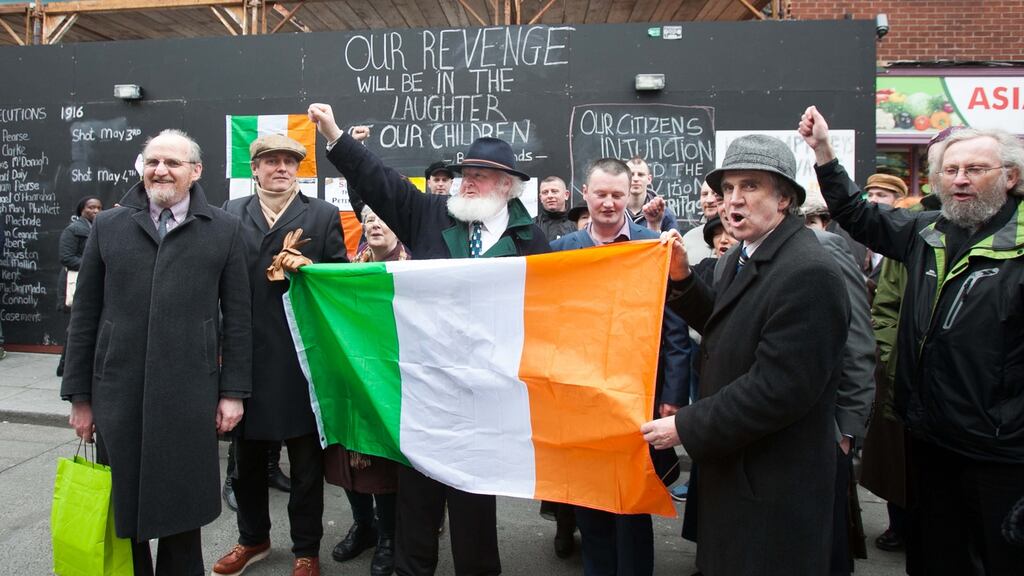A “fitting” judgment, delivered on the eve of the centenary of the 1916 Rising, meant the last extant battlefield would not be subject to the wrecking ball, relatives of the rebel leaders said.
Emerging from the Four Courts carrying a tricolour, the small group hailed the decision of Mr Justice Max Barrett – running to almost 400 pages but delivered in a rapid summary over just a few minutes – as a victory for their campaign.
James Connolly Heron, great grandson of James Connolly, said Friday's ruling was "the culmination of a decade-long campaign where citizens of Dublin came together to protect and preserve the very birthplace of the Republic".
They had stood together in principle “over a decade, against great odds – almost the same as the odds that the volunteers of 1916 went out to meet”.
“ So today is an amazing day for us and there’s a lot of work remains to be done. But certainly today shows that on each and every occasion that we have met with government officials, various ministers, we have been correct in asserting that what is at stake here is the future of the birthplace of the nation,” Mr Connolly Heron said.
“This area of the Moore Street area is the last extant 1916 battlefield. It must be preserved and protected at all costs. So the campaign continues.”
Asked if there was a danger the minister might review the project and come to the same decision as before, he said such an outcome would be “absurd”.
“You hardly build a shopping centre on top of this sacred ground. So it is very fitting that on the eve of the centenary celebrations of this momentous, seminal moment in our history, that the last extant battlefield will not be destroyed, will not be subjected to the wrecking ball. And this is an amazingly great day for campaigners.”
Proinsias Ó Rathaille, grandson of Michael Joseph O’Rahilly, who was shot and killed during the Rising, paid thanks to the campaign’s legal team and to Colm Moore, in whose name the proceedings were brought.
“This is going to go down in history as the most important day in this centenary,” he said.
"It's funny that a hundred years after 1916, close to the date, that we had to go and take on the State as such. And today we have got the answer: we've won. So this is just not a victory for us, it's a victory for the people of Ireland, it's a [victory] for the public, it's a great victory for our new generation and their families, and of course the diaspora who are going to come over here knowing this news. It's absolutely fantastic and I really am over the moon and I feel justice has been done. Sin é."
Patrick Cooney, founder of the Save Moore Street Campaign, said it had been "a very long, hard slog" but the battle was not over yet.
“We hope that what happened today in court and our campaign will serve as a template to communities all around this island who are facing adversity with local councils and state neglect of national monuments and other areas. We are now going down to Moore Street to celebrate.”










